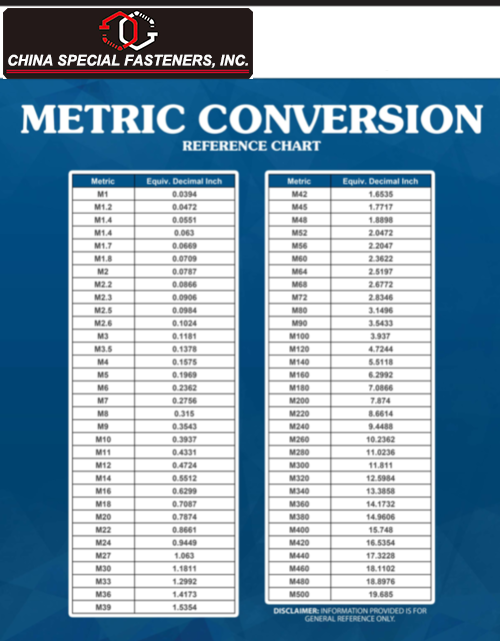Understanding Metric Fasteners
Metric fastener sizes are specified by diameter, pitch and length, in millimeters (mm). Sizing for nuts will appear as diameter and pitch. If the pitch isn't specified, the fastener is assumed to be coarse thread by default. Here is an example of how metric sizing:
M10-1.0 x 20
Taking a closer look at this description, let’s explore its meaning:
M = This designates the fastener is a metric size
10 = The nominal diameter in millimeters
1.0 = The thread pitch, or distance between threads, in millimeters
20 = The fastener’s length, in millimeters
Now, let’s look at an example illustrating how a coarse thread fastener would be labeled:
If the size is M10 x 25, that would mean that the diameter is 10 mm. Since there is no thread pitch listed, the fastener is assumed to have a coarse thread. The 25 indicated a length of 25 mm. A matching nut would be labeled M10, which also doesn’t require a thread pitch since it’s a course thread fastener.
If you generally work with fasteners using imperial measurements (inches, etc.), the pitch notation can be a confusing. Just remember that thread pitch means the distance between adjacent threads, so in the example at the beginning of this article, the 1.0 thread pitch indicates that the distance between one thread and another is 1.0 millimeter.
Imperial measurement fasteners are classified by threads per inch, so a 1/4-20 bolt has 20 threads per inch (TPI), while a 10-24 screw has 24 threads per inch. You can determine the threads per inch of a metric fastener by multiplying the millimeters by 0.03937, and then dividing 1 by that number.
At China Special Fasteners, we’re here to help. If you have questions about any of the dimensions of metric fasteners, or need help with conversions, just contact us. We have also created some handy brochures to assist you, including our metric line card and metric conversion chart with selection guide.

.png)
